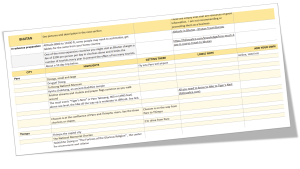The Amazon in Ecuador
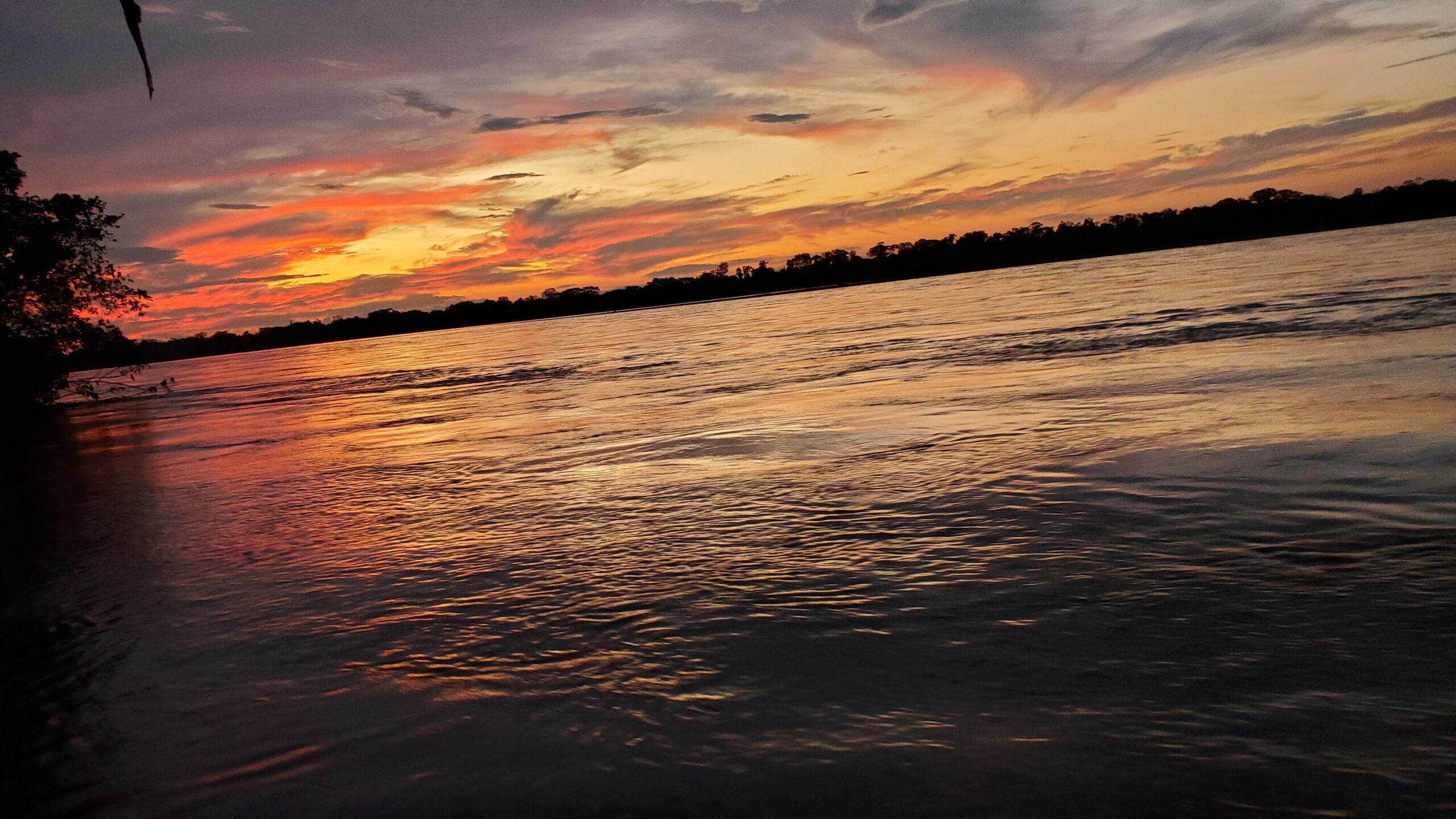
Cover: The Amazon, Ecuador
The Amazon rainforest covers a considerable portion of eastern Ecuador and is a vital part of the country’s ecosystem and biodiversity. The beauty, remoteness and sounds of the rainforest, the birds, the river and the people, all make up for an unforgettable experience.
Zoom in and out or move map to view pins. Use the Share icon on top right corner of the map to send it to your phone or email.
Shown by lines on this map is the deep (upper) Amazon we visited in Ecuador. The lower Amazon in Ecuador and all the other national parks of the Amazon in Peru and Brazil are displayed by the blue pins.
What’s on this page?
IMPORTANT
- For any serious travel planning and to enhance your experience with the pictures, view all blog pages on a laptop/large screen versus on the phone.
- All the text content is in the collapsible sections (+ to open, – to close).
- Every picture on the site has a caption that is not visibly displayed. How to see the name or location in pictures of interest? If using a laptop, hover over the image. If using a mobile, hold finger down on the image. (This instruction may vary with browsers, and type of device such as iphone and Andriod).
NEED HELP WITH TRIP PLANNING?
You can use the Highlights section to create your own itinerary.
But no time or inclination to delve into details? No worries!
I will curate and customize a trip for you, based on your interests and needs. You will receive a well-planned day-by-day itinerary and travel advice.
Visit Services & About for more details.
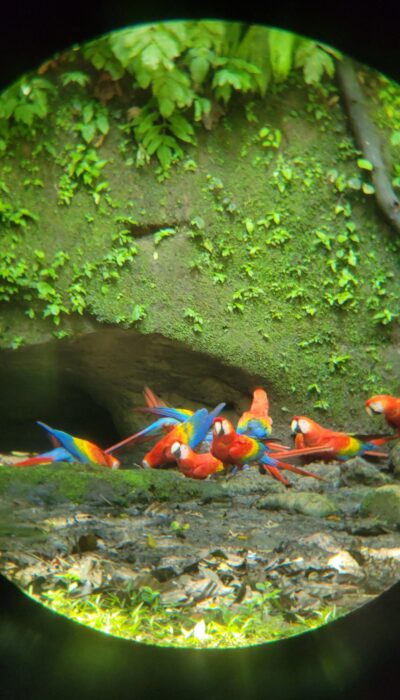
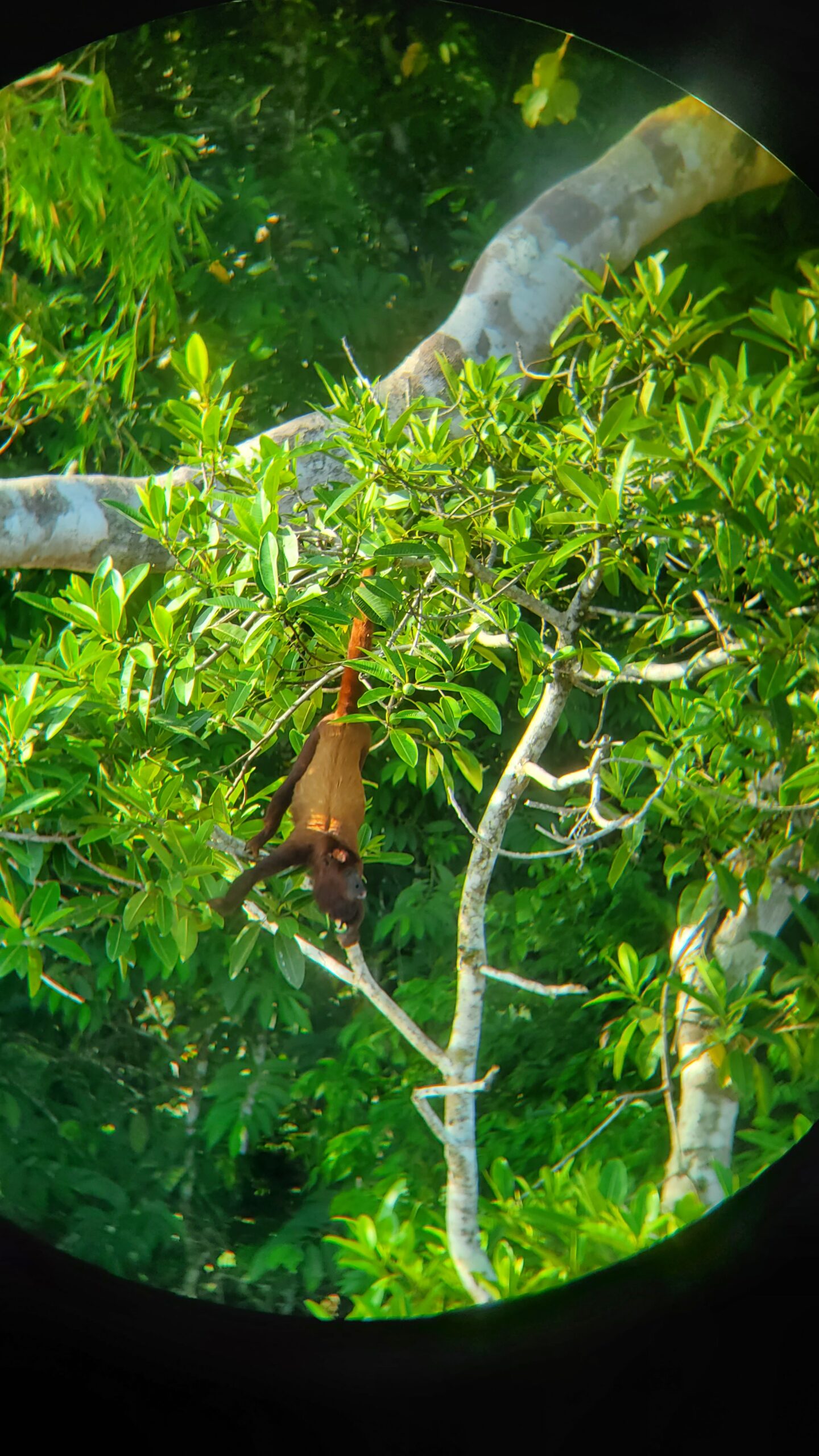
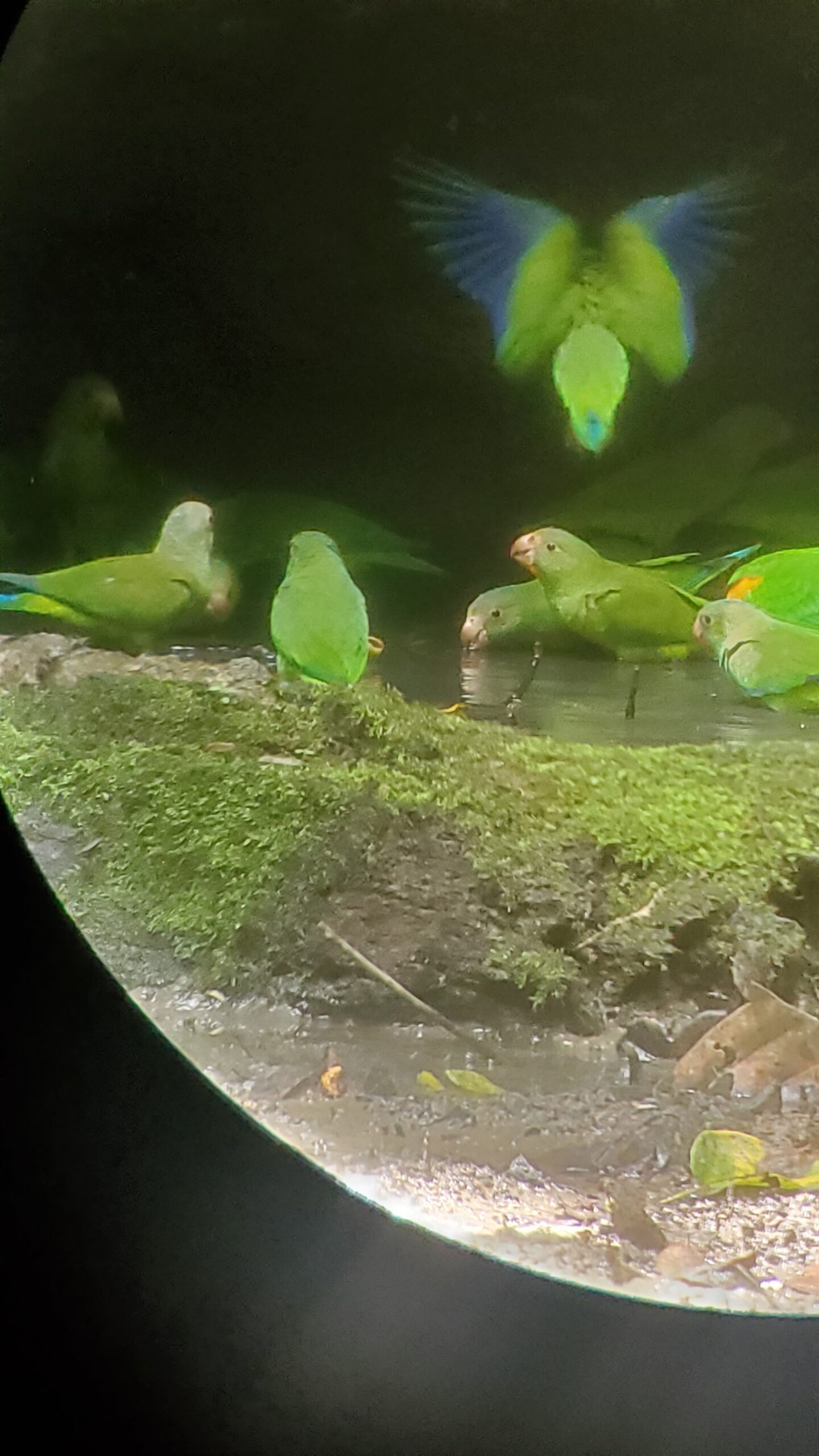
Tidbits
TIDBITS (+ to OPEN, - TO CLOSE)
Official currency is the US Dollar. It is highly recommended to carry cash in small dollar bills as it is their preferred mode of accepting payment. Tipping is expected and can vary from small bills to 10 or 15% depending on the establishment.
Ecuador uses 110 volt, 60 cycle electricity, same as the US. Plugs are also the 2-pronged flat type as in the US. This is either A or B type plug adapters.
While the native language deep in the Amazon is Quechua, one can get along well with Spanish. And if you do not speak Spanish, you will need a contact/guide who can speak English and be your interpreter.
The weather in the Amazon is pretty consistent and varies from hot and humid to rainy season. Dry Season is from July to December and it is considered the best time to visit the Amazon as it is less humid, the water levels in the rivers and tributaries are lower, making it easier to navigate waterways or hike in the forest, and also making it easier to spot animals. Always though, be prepared for some showers.
Going to the deep Amazon to stay in forest lodges in not everyone’s cup of tea and definitely not for the faint-hearted who hate being too far from civilization.
We were asked to carry some of the following items, and others we added on our own:
-
-
- Binoculars
- Camera (from phone to sophisticated ones)
- Bug spray
- Sunblock
- Sunglasses
- Hat or Roman cap (that covers the neck)
Long cotton pants and long sleeve cotton shirts – light colored - Raincoat or poncho
- Flashlight – get headlamps if you can
- Water bottle
- Daypack
- Snack Bars
- Small-denomination currency
- Slippers or sandals and something waterproof if you wish
- Lodges will typically ask for your shoe size in advance and have rubber boots for you to borrow – so no need to carry
- A small first aid kit and basic medicines for fever, stomach upsets and pain
- Battery pack for phone backup recharge – after all tons of pictures!
-
Writing by Jyothi Shankar and Baldev Nair. Thanks to Sunil for taking many of the pictures, and Geeta for bringing her ever sunny disposition on the trip!!
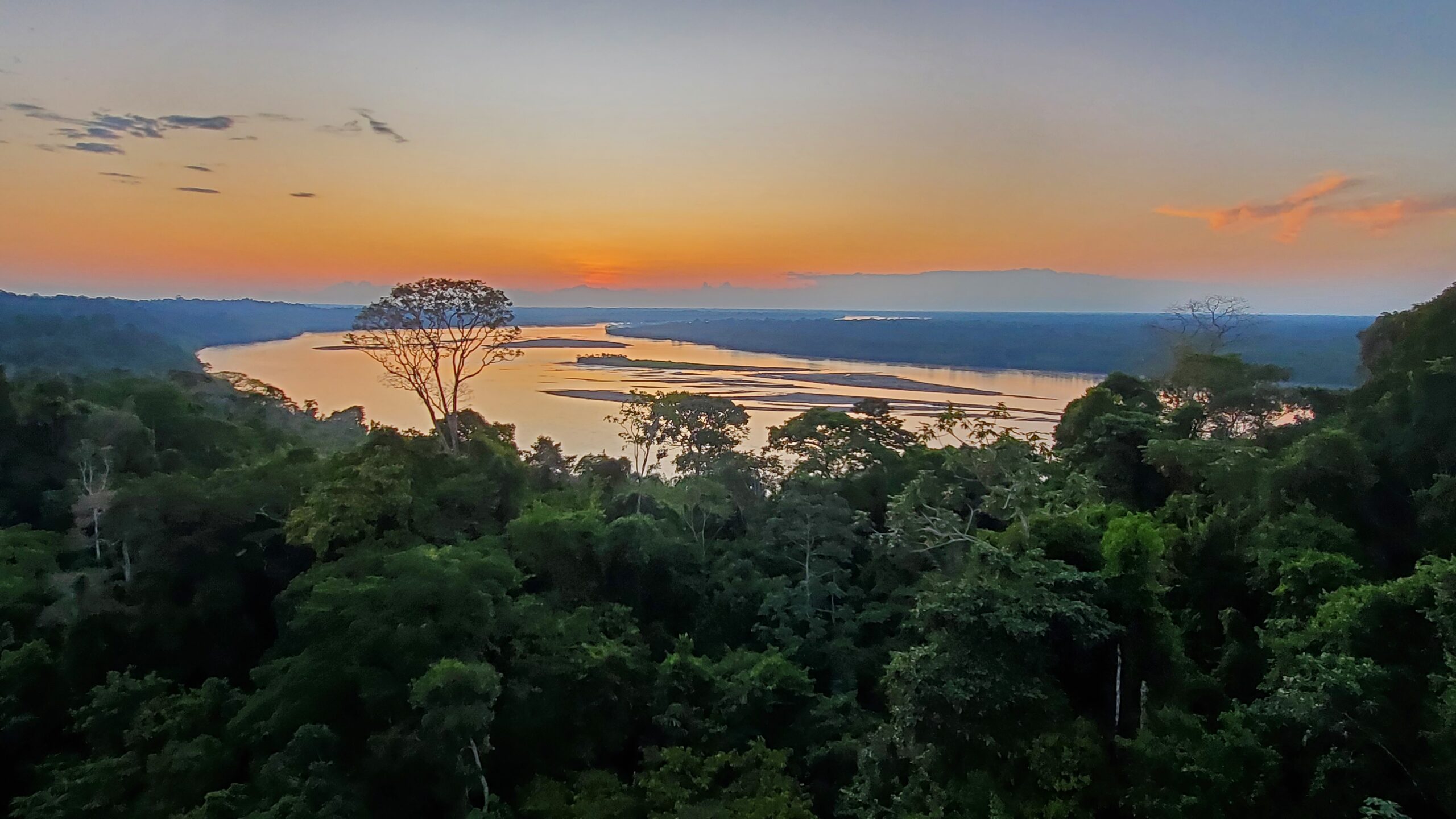
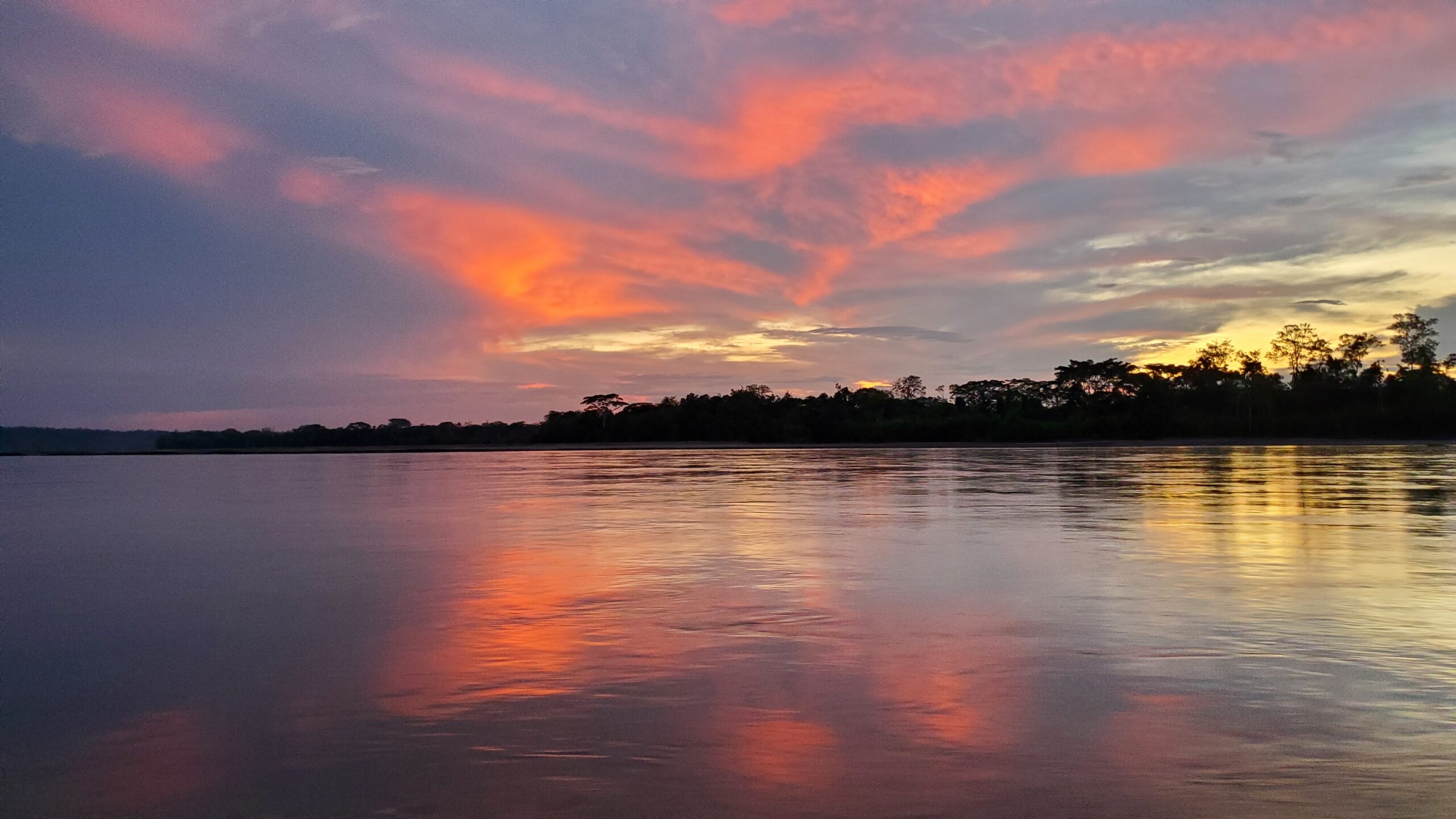
Highlights
BIG QUESTIONS (+ to OPEN, - TO CLOSE)
Deciding on which Amazon to visit
— Jyothi
The size of the Amazon Rainforest is mind-boggling, being one of the most diverse ecosystems in the world, encompassing an area of over 2.5 million miles across eight countries in South America of which I had a long time ago in my teens, decided to visit the one in Brazil. However, a few decades later, I found myself reading and talking to a few people about it and then being uncertain about my teenage dream :-)!
So it wasn’t easy for me to decide on which Amazon rainforest to visit – the one in Brazil, Peru or Ecuador. In fact, I agonized over it, reading article after article. A few years ago, I would have not given it a second thought and would have jumped at Manaus in Brazil. However, the more I read (and after talking to one person each who had visited one of the three forests) and planned the rest of my Ecuador and Peru trips. I got clearer. I will try to very briefly summarize what brought about my decision. For me one of the biggest attractions was to visit a large clay lick and the rest followed after. A clay lick is an area where primarily parrots and macaws congregate every day to detoxify themselves by consuming clay. Read more about clay licks here. For anyone else wanting to go, that decision would be different based on what you are after.
The Amazon trip with its long boat ride to reach a remote lodge (and being far from medical facilities) is not for everyone. But you know yourselves to make that call.
The Brazilian Amazon
- Manaus is the most common point of entry to the Brazilian Amazon. The flight to Manaus in Brazil is 4 hours long from Rio (if that is where you will be).
- Only in Brazil you will encounter the Amazon river and not its tributaries (as in Peru and Ecuador). It is also here that one can see the meeting of the waters where the Amazon meets Rio Negro if that has been on your to-see list!
- Brazil is home to so much of the Amazon and has a huge amount of wildlife. With tourism being very developed, it has several tour companies to take you on cruises of different budgets (and comfort-luxury levels) whether it is a cruise or a forest lodge. You will be able to take various little side excursions/tours (like Piranha fishing) which may or may not be included in your main package.
- Depending upon the tour company you may just skirt the rainforest, versus going in deeper. Do your research well about the tour company. Also, its common to sight wildlife like otters, cayman, monkeys and fish like piranhas. However, I heard that it is not as easy to spot a jaguar or birds in the wild and people often visit aviaries to see a host of colorful birds.
- Given that I wanted to visit a clay lick, there weren’t really any written about in the Brazilian Amazon.
- I read accounts of Manaus being a very industrial town and the Amazon being polluted by waste which put me off. And oil rigging.
- My friend who went to Brazil said that this was her best ever trip – she loved cruising on the river which was the highlight for her. She mentioned not seeing much wildlife in the wild itself but that was not her focus. She saw a lot of incredible macaws of different colors but in the aviary. She thoroughly enjoyed seeing the scenery from the luxury cruise, and a 11 pm boat ride into the forest. So different people enjoy different aspects of the same place.
The Peruvian Amazon
- Peru has the second largest rainforest and has a huge number of species too. In Peru itself there are three areas of Amazon one could visit – Iquitos, Manu and Tambopata. Read more here.
- Puerto Maldonado is the gateway to Tambopata and is located in Peru’s southern Amazon Rainforest. This is a convenient one for visitors combining Machu Picchu with the rainforest. Tourism again here is well developed and so you will find different lodges or cruises to choose from.
- The river Madre de Dios is a tributary of the mighty Amazon. Still considered the Amazon.
- The Peruvian Amazon is home to a lot of wildlife and birds – thousands of species – but most commonly you will see river otters, macaws, parrots, and some other bords, monkeys, pink dolphins, caymans and piranhas.
- The Tambopata reserve is very large and has in it the Tambopata Reseach Center with lodge.
- One of the greatest attractions of the Peruvian Amazon is the world’s largest clay lick.
- The time taken to reach the Peruvian Amazon in the south at Puerto Maldonado is much shorter (than going to Manaus in Brazil). You will take a short flight of 1 or 1.5 hrs from Cusco or Lima, followed by a short boat ride. If you are visiting Tambopata reserve you will travel by boat for an hour to 4 hours depending on which lodge you have chosen. The deeper you go, the better the wildlife. The Tambopata Research Center takes 1 hr by bus plus 2.5 hours by boat. Many go to the Refugio Amazonas Lodge. It takes one hour by bus and then an hour by boat to reach the lodge.
The Ecuadorian Amazon
- As I started to read about the Ecuadorian Amazon, and got interested. There are two gateways into the Amazon. One called the lower Amazon at Tena near Banos (a town we were going to during our Andes trip) in the Oriente region, and the other called the deep Amazon, much more north and west (and not near where we were going) with a town called Coca being the gateway into the Yasuni National Forest.
- The deep Amazon at Yasuni is what was of greater interest to me. Some points:
- Get to see the clay licks in Yasuni national park.
- The rainforest is extremely biodiverse and smaller compared to the other two, and is quite easy to spot wildlife. You will get to see pink dolphins, piranhas, cayman, macaws, parrots and other birds, similar to those in the other two rainforests.
- The river is the Napo river, a tributary of the mighty Amazon. But still considered the Amazon.
- It is the least developed of the three Amazons and so not as many choices with tour operators as the other two in Peru and Brazil. That can be good or bad depending from one’s point of view.
- I also talked to a distant acquaintance who had visited the rainforest in Ecuador. She said that she was rather underwhelmed and went on to explain that it was perhaps because her lodge was situated at the periphery of the rainforest versus in the interior. The lodge itself was well-appointed and beautiful but there was not really much wildlife she saw and she had imagined the forest to be much denser etc, she said. However, she also told me that it might be a very different experience if I picked a lodge farther down the river and deeper into the rainforest.
- My comment upon returning from Yasuni – saw quite a lot of oil drilling enroute to our lodge. Not pleasant to see lots of foamy masses floating on the river. It is sad. Hope the government will act upon reducing this hazard.
- We really enjoyed the whole experience of living with the family and doing the forest hike, the observation tower over the canopy tower, a large clay lick, watching macaws at the chuncho tree and getting to experience the forest with its medicinal trees (my first hand experience where the bark was scraped and the sap was applied to my bites, next day they were not itchy).
- To me, the wildlife was unique. However, the rainforest itself was not what I was expecting – I expected it to be so dense that no sunlight would penetrate to the ground, I expected more rain (somewhat like a cloud forest). I expected it to be so wide that I wouldn’t see the other end of the river (may be it is like that in Brazil). So yes, different from what I imagined but nevertheless, the Amazon, no less.
Deciding on a lodge in the Ecuadorian Amazon
— Jyothi
I do not cover the cruises and lodges in Brazil or Peru in this section other than providing some links.
- Tambopata Reseach Center and lodge, Peru
- Refugio Amazonas Lodge, Peru
- The Peruvian rainforest and Brazilian rainforest, and their lodges. This link also has various cruise operators and lodges listed for both Brazil and Peru.
At this point, my preference was to do the Amazon at the end the Andes trip in Ecuador (in Sept 2023) versus combining it with my Peru + other parts of South America trip (that was to start in Nov 2023). My reasoning was that I wanted to come home (to the US) and get over any bug bites after doing the Amazon, and then leave for the rest of South America trip. I am serious about that because once I get bitten by bugs (and I am highly prone and allergic to them), it takes me more than a month to recover.
I then started to research the lodges based on where they were located in relation to the lodge my earlier-mentioned acquaintance had stayed in. I wanted to look into some much farther into the forest in comparison to that lodge. I did find many that were deep into the Yasuni national forest and I read about each lodge and what they offered, the wildlife in the area, visits to the clay licks and so on.I narrowed down to two lodges (Sacha and Sani) and called them, gave my requirements of what I wanted to see and not see. They had a customized itinerary (set over the years) and would not budge from that. Then I came across a lodge called Sinchi Wayra, much down the river, deep into the forest, which had just begun its operations. There were no reviews at all on the web. I decided to call them and spoke to an American lady and a Swiss gentleman who were both helping the Kichwa family (who owned the lodge) with the set up and start of the business. I was skeptical because there were no reviews. But these two people who were helping told me they were comfortably living there for months and had no issues. I asked for videos of the lodge and they were kind enough to send me. It looked rustic but clean, comfortable and well-kept just as they described it. I knew it would be hot and so asked about air-conditioning. There is none but I was assured it would be bearable at night. The other two lodges, Sacha and Sani were very well established and looked like resorts with several rooms unlike this one at Sinchi Wayra which was more a house. I was told that Eddie (at Sinchi Wayra) was trained in one of these lodges before he decided to open his own family business (read more about this family in Baldev’s account below). I next wrote to Eddie about my exact requirements on what I wanted to visit (and not visit), and promptly came the reply that it would be fine. I didn’t need to do exactly what was on their itinerary but I could customize it. This decided it for me! I was going to take the chance on them, their new lodge and their Amazon eco-tourism business!
I liked the idea of staying in a small place, having an intimate experience, both with the Kichwa family and the nature outside. The lodges I saw in Peru and Brazil seemed to provide a more touristy experience in terms of stay and interactions. While Sinchi Wayra seemed more rustic in comparison, it attracted me also because I was trying out something brand new in the Amazon (Sinchi Wayra only began in Sept 2023), we would be helping a family with their new venture, and we would be getting undivided attention as the only guests!! When chatting with the American lady who was helping at the lodge, I found that she was building their website, and I let her know that I was a UX specialist. She then requested me for some feedback about the website and I put my UX hat on, wrote it up and sent it to her. I found two airlines to get us there – Latam or Aeroregional. The difference in fares was huge. I picked the lower cost Aeroregional, a half hour flight, to take us from Quito to Coca. It was going to be a 3-hour boat ride from Coca to the lodge.
The plan was set. Somewhere along the way, I happened to mention this trip to my friend Geeta and I asked her if she would be interested. Upon hearing its location and checking out the video, she said no, this sounded a bit too out there for her!! A few weeks later however, it seems like Geeta had a change of mind and she decided she would like to do something like this. I was thrilled that Sunil and I would have their company – a few more hands to hold as well for a trip like this into the wild :-))!! I must thank Geeta and Baldev for deciding to take this chance with us! We had such a unique kind of an experience staying at this family lodge, it felt so personal with the warmth and hospitality. We got to do whatever we wanted to explore, our ears were privy to a jaguar’s kill, we saw the most beautiful macaws and ate some wonderful food. Read the narrative below by Baldev.
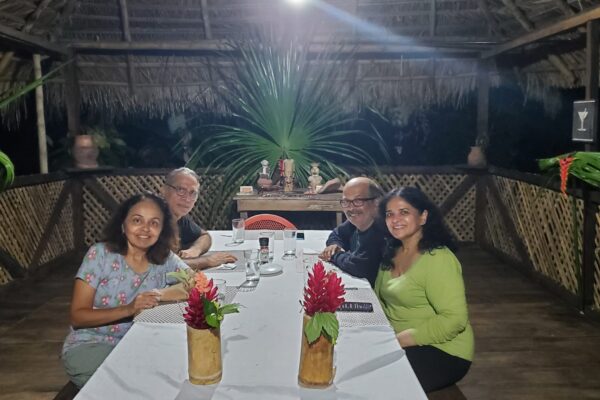
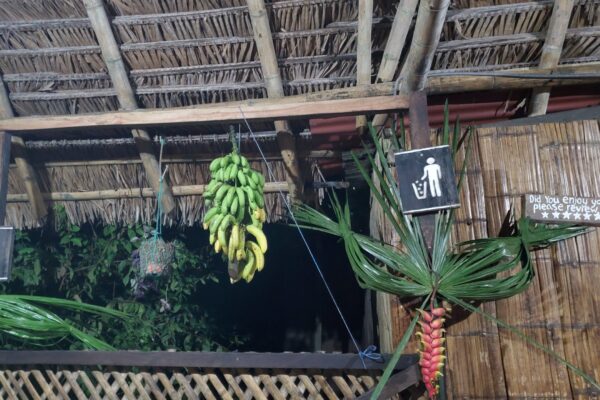
Vegetarian Food in Sinchi Wayra
The vegetarian fare at Sinchi Wayra was superb. So much through given to every three-course meal that ended in a perfectly presented dessert. While I (Jo) was the only one that was vegetarian, I was so touched by how much thought was given each day to each of the three meals and the variety of vegetarian that Marco made from the local ingredients. Very fresh, organic, and from as local as their yard. My three fellow travelers could eat fish or chicken. One evening they were presented with fish that was freshly caught off the Amazon river and it was Ceviche time.
Always in the dining room, one of the brothers waited upon us, while others helped around in various ways, and the one little kid Alan (the 3-year-old child of one of the staff) that we had got friendly with, played under our table and tugged at our legs or shoes!
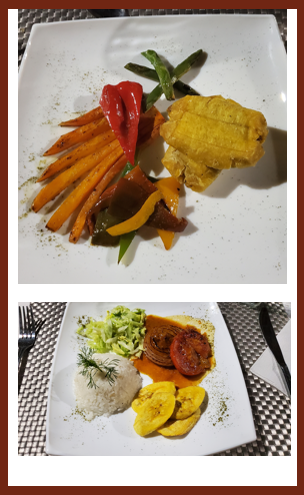
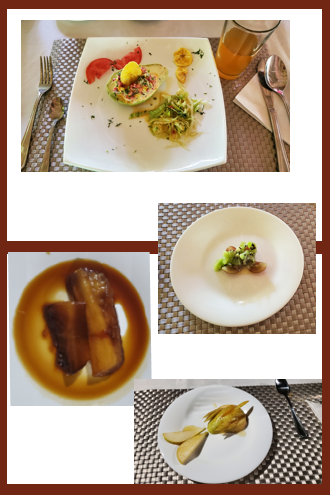
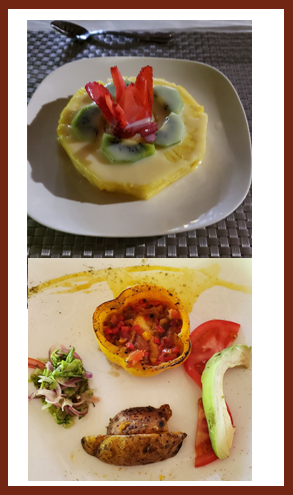
A narrative of our Amazon experience in Ecuador
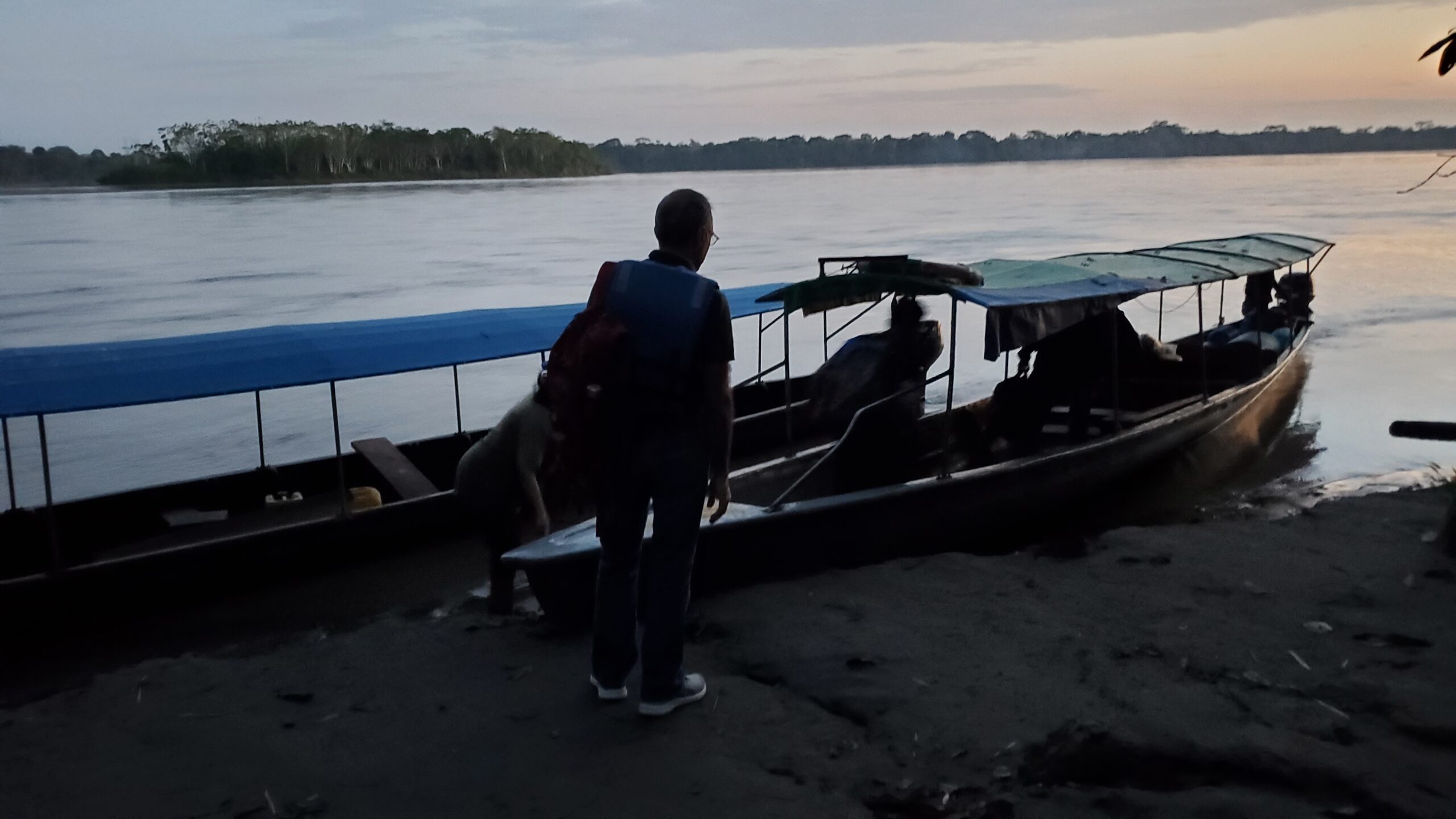
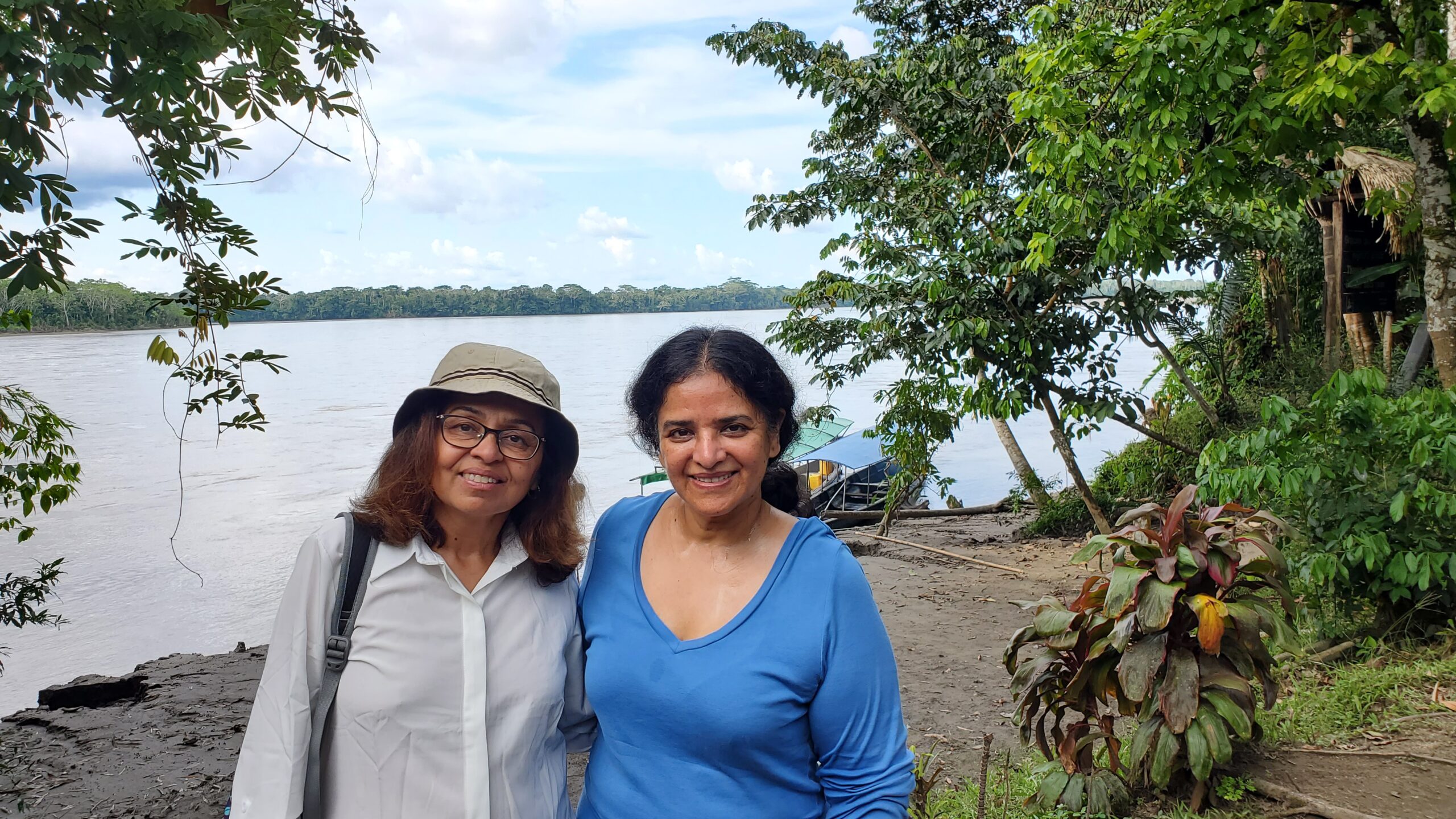
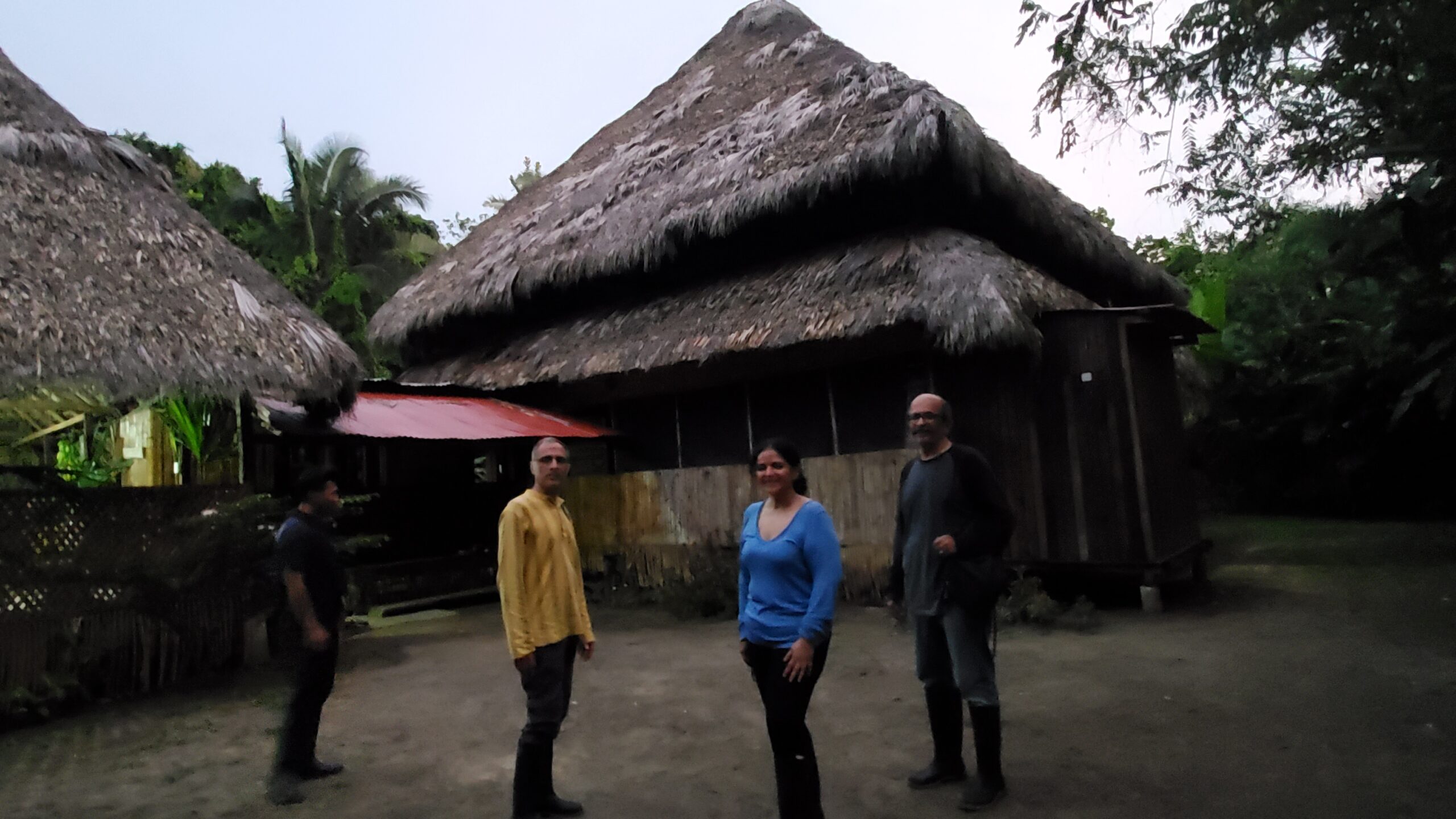
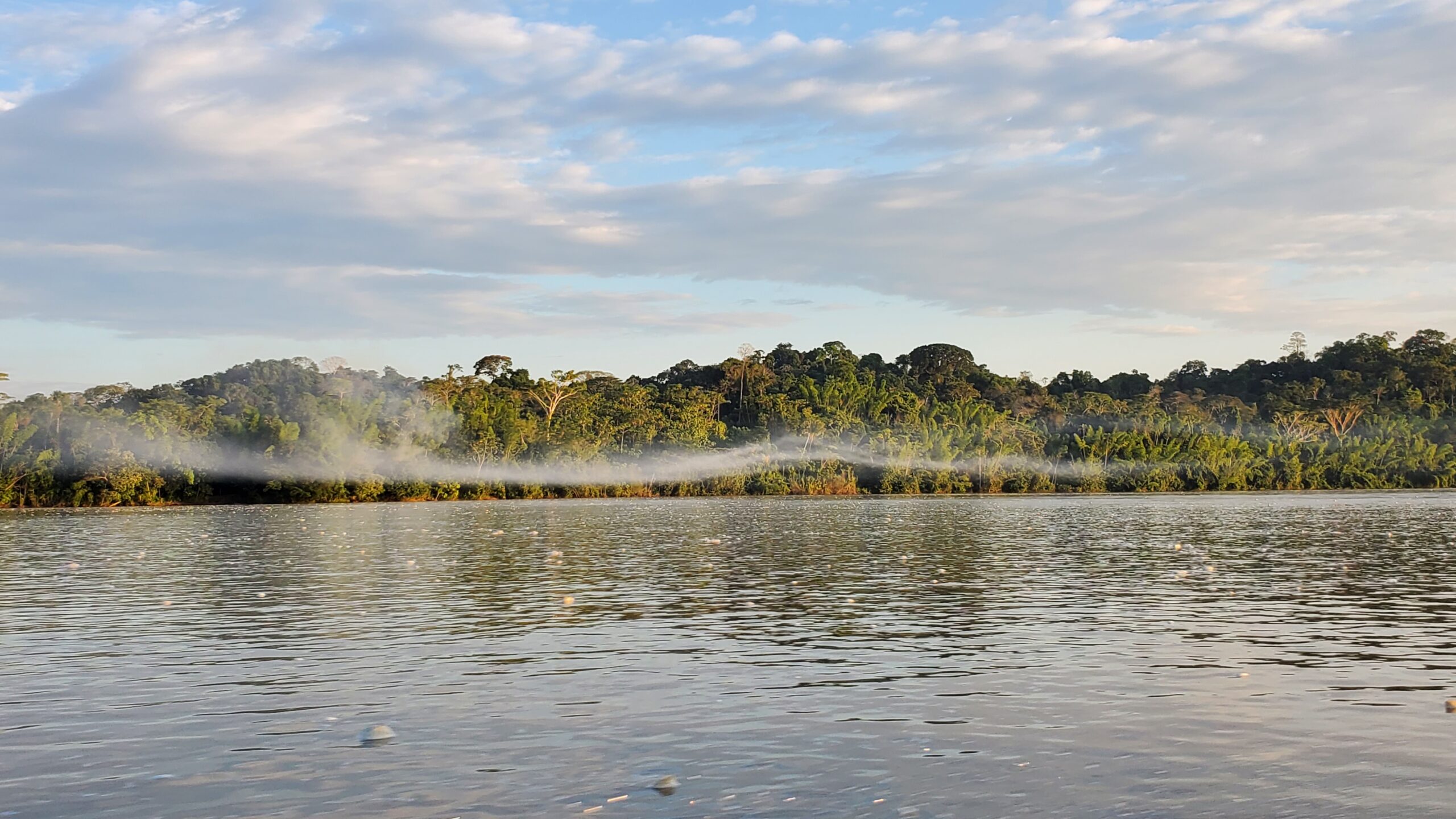
An Authentic experience of living with a local family
— Baldev
After a day in Quito, we went to Coca, a 30-minute flight to the last big town before the country yields to the Amazon basin. Our flight was operated by a domestic carrier, Aero Regional; Latam being the other choice. Coca airport, with two gates, is reminiscent of some of the small regional airports in India. We were met by our tour guide Edwin from Sinchi Wayra Lodge, who put us in a cab for a short drive down to a breakfast place and then onto the pier. All our luggage was smoothly transferred onto a motorized boat that was skippered by Edwin Senior, the patriarch of the family that ran the tour. The boat was basic with wooden seats. Truth be told, it was a bit daunting to think of being so far away from civilization when one of our stomachs had revolted just the previous whole night (3 hours by boat from a tiny little town where there was perhaps very basic medical facilities) but once we were in the boat with the breeze on our faces and the hypnotic hum of the engine, those thoughts vanished. The three-hour downstream ride along the Napo river took us to the lodge itself. Papa Gualinga skillfully steered the boat around shallow spots where we could have run aground, and negotiated the wake left by faster power boats that passed us from time to time. On either side were dense forests with occasional gaps that revealed boat landing spots and small wooden cottages beyond. Some of these, we were to discover later, had to do with renewed oil drilling in the Amazon. We were assigned the two rooms Anaconda and Trumpeter, in the home.
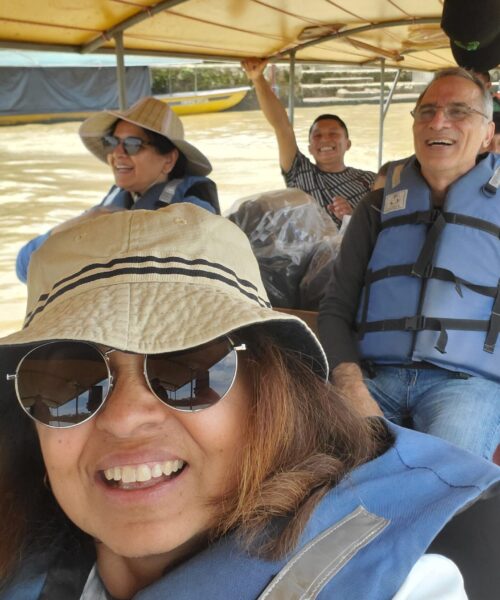
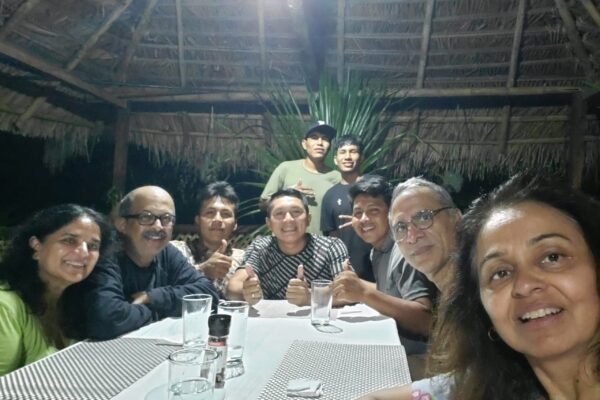
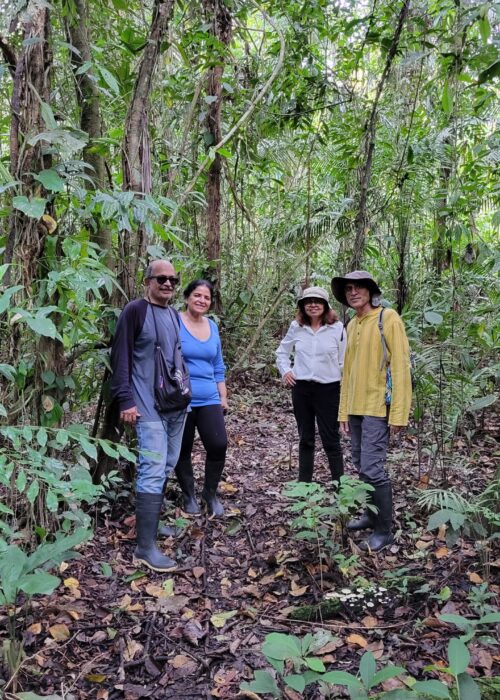
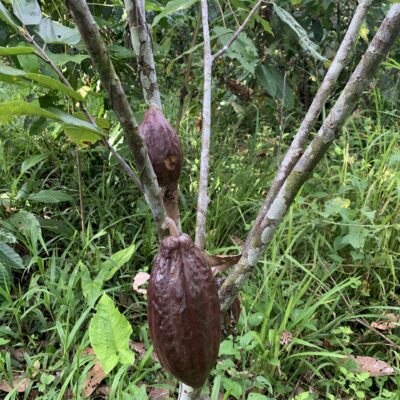
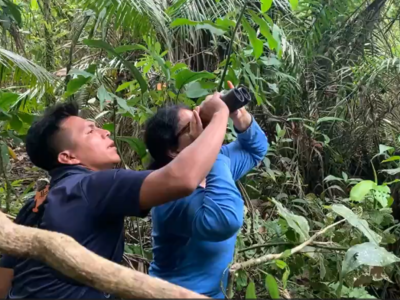
September being in the tourist off season (and also because we were one of their initial guests upon having opened their tour business) we were the only guests at the lodge which was run by the Gualinga family. It was refreshing to see the whole family pitching in to make a go of the business. Eddie, who spoke English, was our prime interface and tour guide. He and his brother Marco had got their training at another lodge prior to this, and Marco delighted us with excellent food courses, prepared and presented with the flair of a Michelin chef. No processed foods, no sweet desserts; freshly gathered and prepared food topped off with fruits, served within 10 feet of the kitchen. One of the brothers waited upon us, while others helped around in various ways. I asked Eddie if he had wondered about making a livelihood in the city, and he was emphatic that he wanted to stay where he was, in the heart of Nature, working with his family. While this sounds wonderful and inspiring, it shouldn’t mask the difficulty of everyday life for people like this family. Most supplies have to be procured from Coca, a 5-6 hour round trip by boat. Internet connectivity is available via satellite, but goes out at 10pm when power from the generator is cut. An enforced discipline that we came to appreciate given our addiction to our phones.
The Ecuadorean government has parceled out tracts of the forest to indigenous families. In return, these families practice agro-forestry, growing their crops without clearing forest trees to do so. Not only does this approach preserve the quality of the soil, it prevents deforestation under the care of the family that’s looking after the land.
The first afternoon involved hiking through the rainforest which was also in part of the land owned by the family. They gave us Wellington boots to put on and we set out after generously spraying mosquito repellent on ourselves. We donned our full sleeve cotton shirts (Sunila in kurta, that served well as comfortable long sleeve cotton). Eddie and his mother Margarita talked about a lot of little things along the way, a plant, an animal, a story, and a lot about medicinal plants. Margarita led the way with a machete in hand. She used it to clear the path is some places with broad blows, while using it to splice thin vines with the precise skill of a surgeon. She gently scraped a bit of skin from tree barks here and there to tell us about their medicinal properties. She knew the forest like her backyard, and told us facts and stories about their culture. She spoke Quechua and a little Spanish, and Eddie, whose patient and loving indulgence let her complete the longest of stories without interruption, translated for us afterwards. These were fabulous stories of the gods and people, of jaguars and magic. Made us wonder if this oral tradition, that she had inherited from her elders, would die out after her time. They also showed us the solid roots of some trees that were above the ground and formed sturdy wooden boards. People who were isolated and lost in the forest could strike at these with a stick and the sound would carry a long way to others who could come to their rescue. An indigenous 911 system. We went back to the lodge to wash up and enjoy another of Marco’s splendid culinary creations.
At 10 pm promptly our lights and internet was turned off. We slept surrounded by the bug free net, hearing the sounds of the forest and woke up early the next morning to the crow of the rooster. This is perhaps the rooster family that belongs to the Gualinga family 🙂
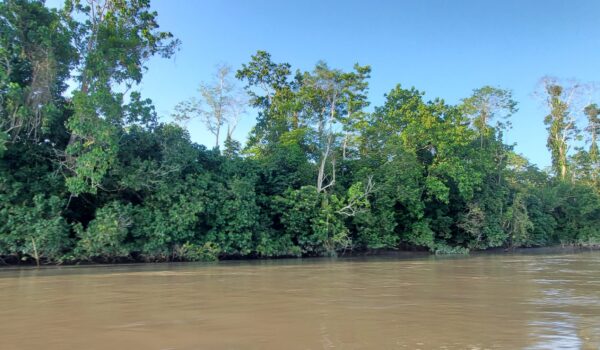
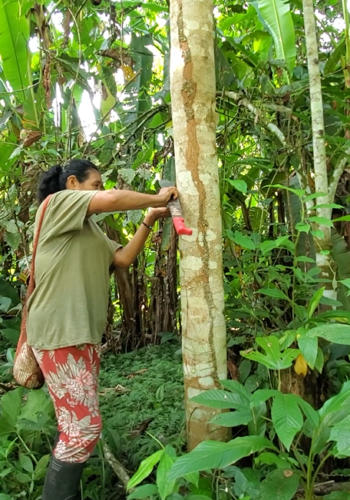
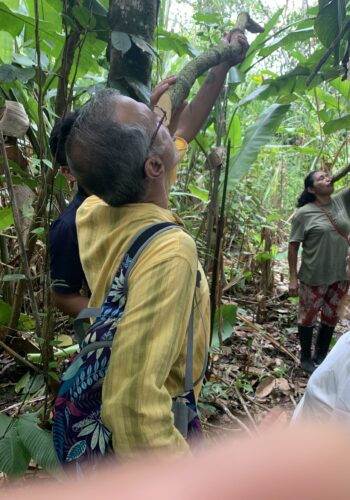
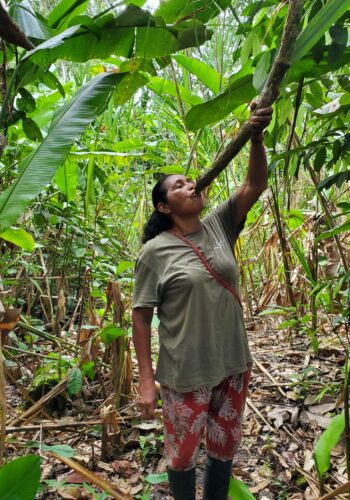
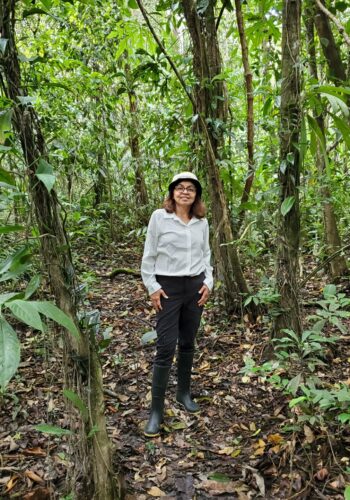
The next day we headed by boat to the Yasuni National Park. On the way Eddie pointed us to monkeys doing their antics on the trees, bush birds and some waterbirds. We tried to take pictures but our cameras didn’t quite do justice. For a country that is small and dwarfed by its bigger neighbors on the continent, Ecuador boasts a rich and varied flora and fauna. 10 per cent of all plant species on earth grows here, as well as close to 5,000 species of birds. While there are mammal species to be found in the wild, it’s the bird species that are the focus of wildlife viewing in Ecuador.
By midday, we reached the clay lick where makeshift wooden benches were placed in a shed to accommodate bird watching. We sat in silence for over an hour and slowly a few other watchers like us from the nearby lodges filtered in. Everyone kept silent. After what seems like a long time, we saw a bird or two swoop in and sit on branches. A few more minutes later, a couple more. Thus, slowly began a colorful avian display intercepted by their screeching noises. First came the large macaws with their multi-colored plumes of which red and blue were prominent. They descended on the watering hole in front of us and proceeded to drink their fill. The salts in the water and soil at that spot supposedly help the birds remove toxins from their bodies. Once the macaws were done, dozens of smaller all-green parakeets or green with blue underwings, came flying in from all directions. It reminded me of the strictly followed hierarchy at watering holes in Africa, where each species knows its place and waits patiently for its turn. It was amazing to sit and watch them in action. Like a performance at an appointed time. The guides all know when they will come and they do not disappoint! Very impressive was the way Eddie took photos of the birds with each of our cameras in front of the binocular lens. Clearly, he had a lot of experience doing that!
We then headed home to enjoy the sumptuous lunch provided by Marco. The afternoon sun and heat made us want to have a short siesta and we before the rest of the activities for the day.
Next, Eddie took us on the boat and then hiking again. Along the way we passed domesticated cows (or bulls) that gave us a few angry looks. Eddie knew a few people in the community we passed. We walked until we reached a clearing and again a bench to sit upon and wait. Several feet ahead of us was a Chuncho tree. This has the kind of food that macaws like to come and feast upon. We waited and slowly again, the performance began as macaws in came in swirling. This time large blue and yellow ones that come alone, in twos or more to settle on the tree around the same time every day. They circle the tree, sit on it and nibble away at its bark. They do that for years until the bark disappears. After an hour or so, and umpteen pictures/videos, we were ready to leave.
All in all, this whole phenomenon at the clay lick and the chuncho tree was like a choreographed performance by the birds.
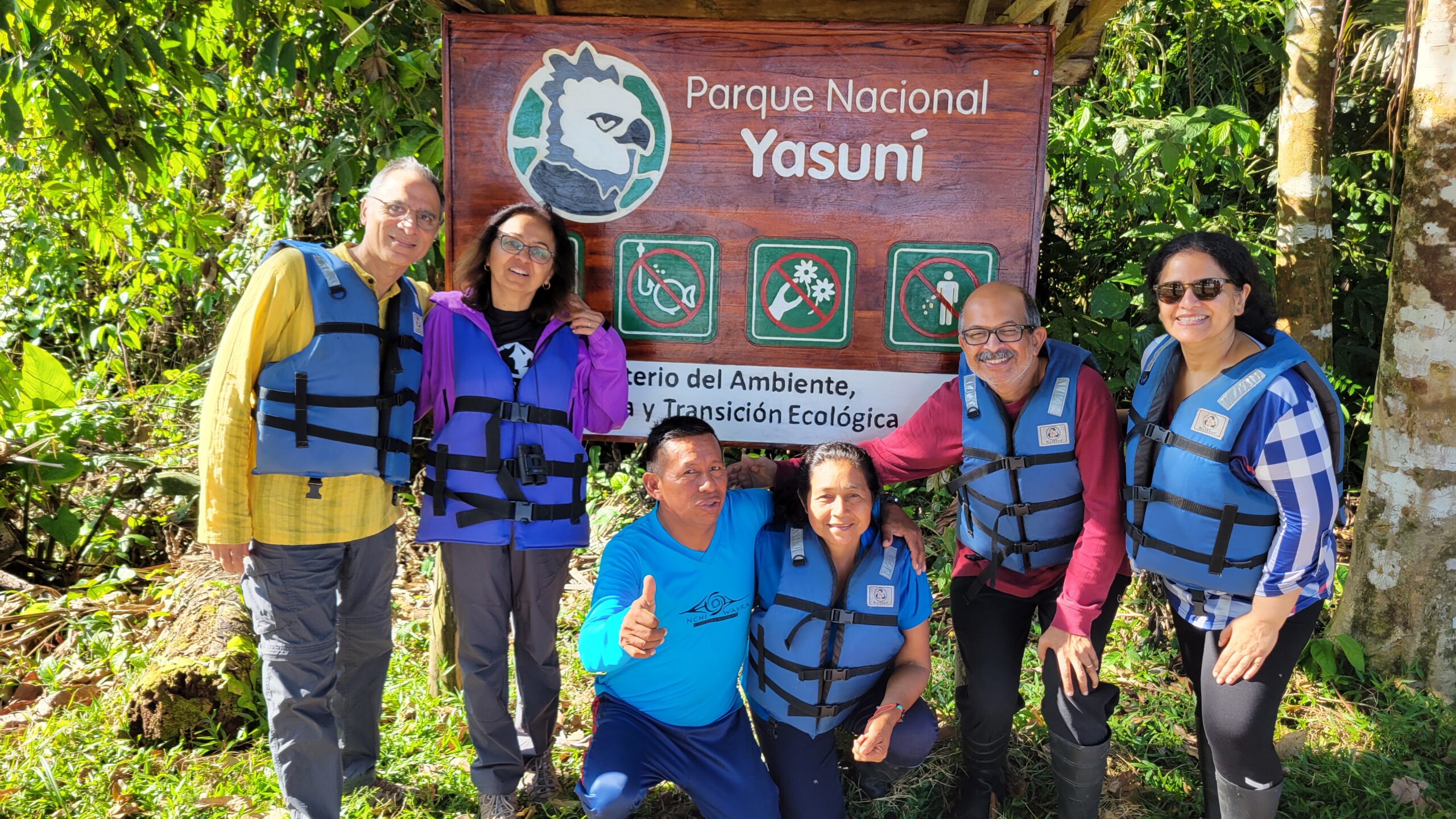
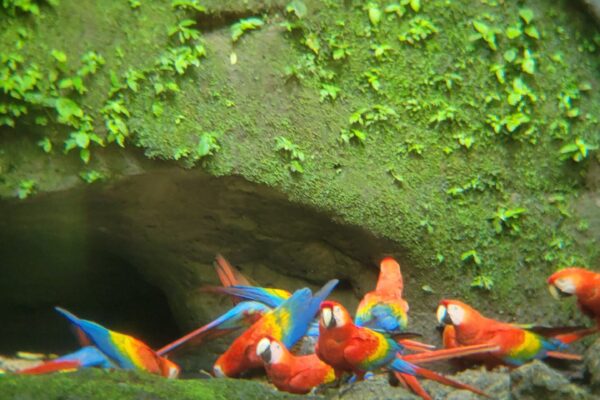
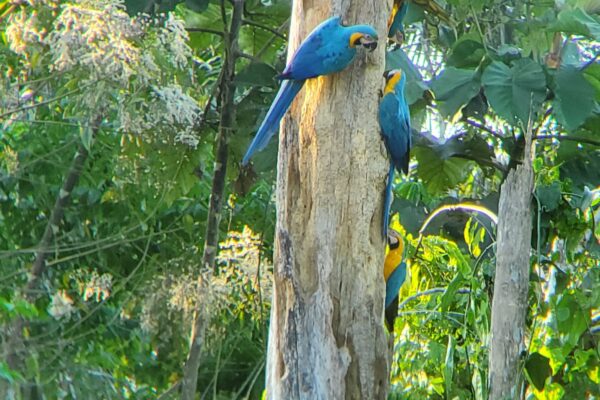
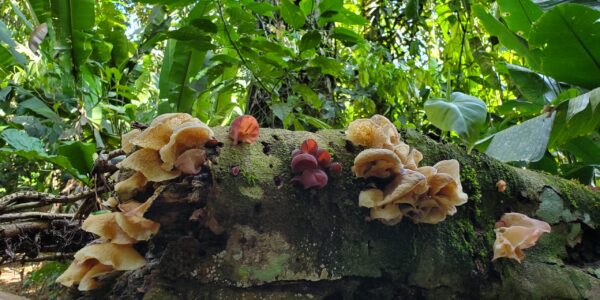
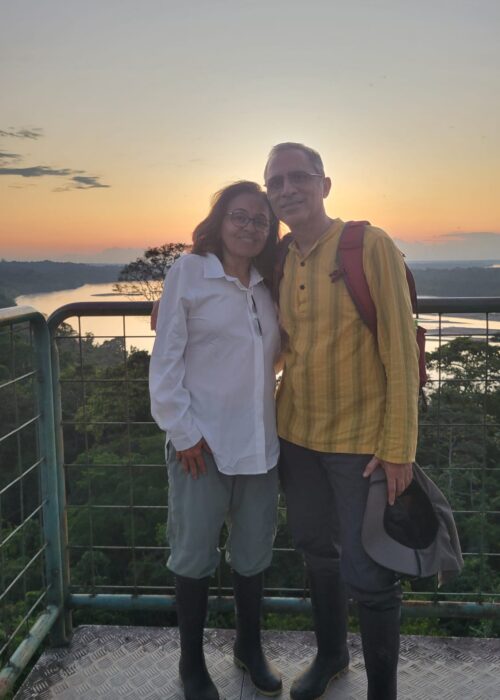
Next, towards late afternoon, we headed deeper into the forest, walking uphill for a while until we reached a very tall viewing station. We climbed up and up and up all the way to the observation deck high above the canopy of trees. We were there to spot howler monkeys. We did see a few at a distance against the setting sun, but their howls carried for miles. The scenery of the river and trees stretching below us against the setting sun was beautiful. In spite of the bug spray, we were bitten here by what seemed like zillions of mosquitoes.
We were still on the platform as night fell when we suddenly heard a loud and quickly truncated squeal come from the forest not more than 50 feet from where we stood. The look on our guide’s face was priceless, like a boy who had unexpectedly received a treasured treat. He told us that while he had never seen a jaguar in the wild in all his years in the forest, what we heard was the sound of a jaguar making its dinner arrangements courtesy of a wild boar. Not surprisingly, after we climbed down and made our way to the boat in the dark, using our phones as flashlights, there were frequent darting glances thrown at the foliage around us. We knew one jaguar was enjoying its dinner but we weren’t sure if that was the only one around. Eddie and Margarita seemed to make that 20 minute walk without a care in the world, even asking us if we wanted to stop and see some animal in its burrow. We refused and focused on the walk in the dark to the boat. In the boat, Eddie asked if we wanted to go on a night excursion into the forest after dinner. We promptly refused! After Marco’s fare, we just wanted to relax and recap the events of our day.
The next day, it was time to bid farewell to the family, and made our way back to Coca on the boat. We got a very early morning start at 5 am. Our breakfasts were neatly packed into boxes and we each were handed one, along with a juicebox. They had truly made us feel at home and a part of the family, including the family parrot that came and perched on my shoulder with an easy familiarity. After our luggage was loaded on to the boatm it was time to push off the dock, waving until we could see Sinchi Wayra no more. The sunrise over the Amazon, as the boat sped, was beautiful to watch.
A few of the brothers and the father accompanied us, leaving Margarita behind, presumably the return trip would be used to ferry supplies back from town. While waiting at the airport looking at one of the two gates, we couldn’t help noting the number of men who were traveling back to Quito. Many of them wore colorful football jerseys (notably the green and yellow of Brazil or the pale blue and white of Argentina, with some Ecuadorean ones too), but a closer look revealed the name Marathon monogrammed on each shirt. These were employees of the oil company Marathon which, along with others, accounted for the oil tankers we saw along the Napo river. They spend the working week in the small wooden cottages in the forest, returning to their families on the weekend. The tussle between economic pressure to drill and the desire to protect its naturally rich environment was being played out here as in many other parts of the world. But then I remembered the words of our walking tour guide Miriam. When I had asked her about the drug cartel driven violence seeping into Ecuador from neighboring Colombia, she had said “there are many bad things happening, but there are enough good people around to fight for what’s right, and we’ll make a difference”.
All in all, we had a fantastic experience at Sinchi Wayra!!
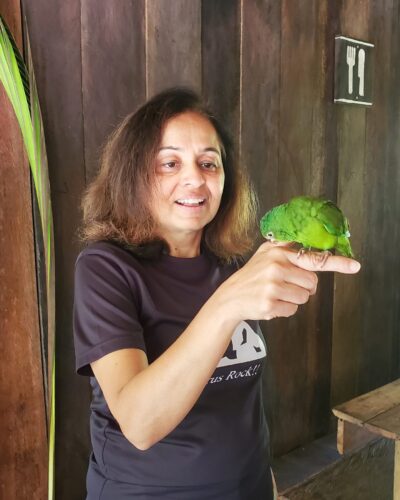


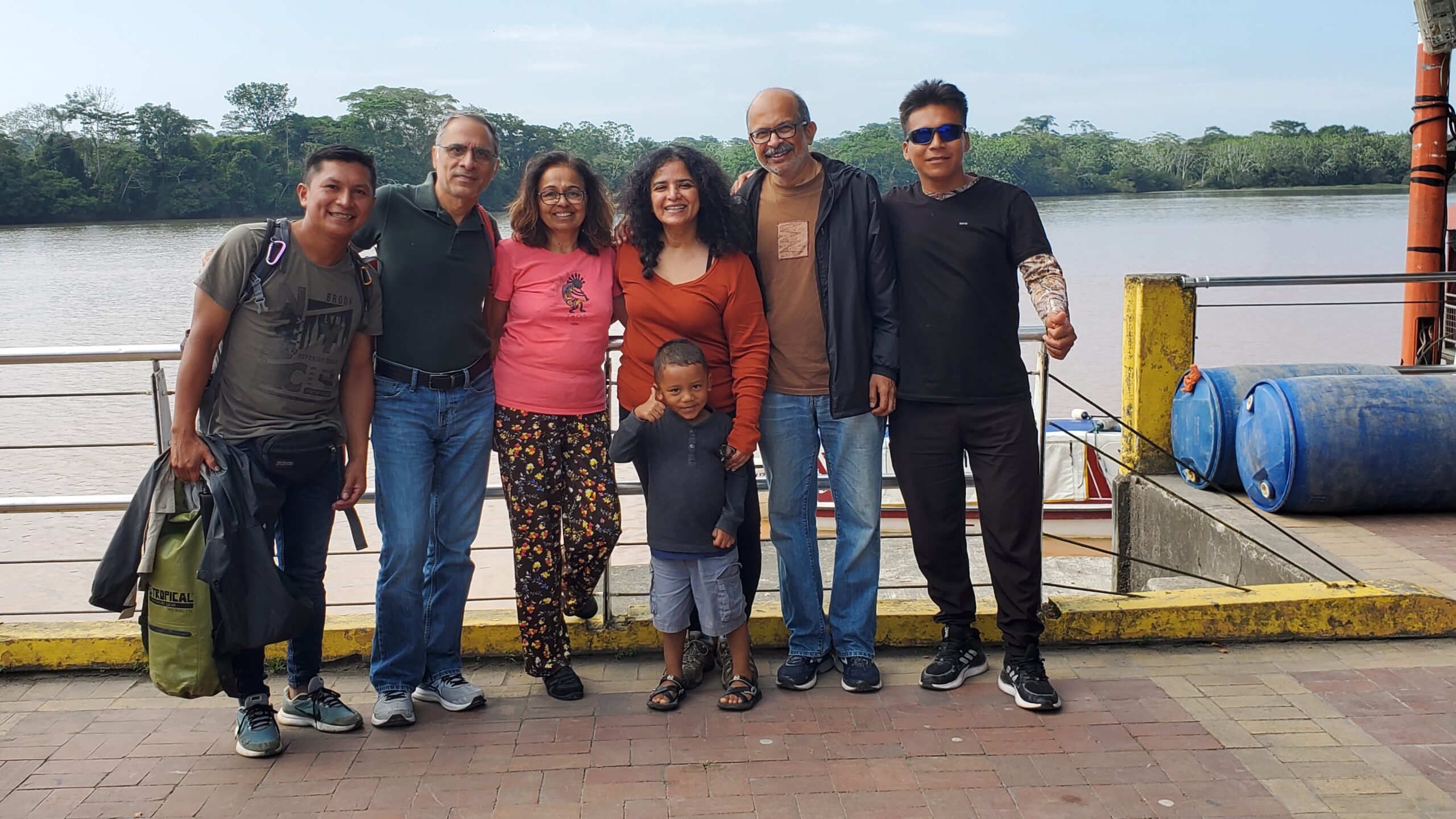
Regardless of which Amazon one goes to and which lodge one stays in, those who are allergic to bites will end up having a hard time with the mosquito bites. Given that we are hiking though the rain forest, it is very hard to avoid it completely, despite dousing oneself with bug spray. I know I counted 39 and was itchy for days in spite of the allergy medicine that I took throughout the trip and beyond! Each of my fellow travelers also had some bites which subsided a little sooner. The first day (when I only had 3 to 4), Margarita, scraped the bark of a tree and applied its sap on the bites. It stopped itching as much. Later in the trip, we were not able to get to that tree which was a little deep into the forest 🙁 In Coca, I bought some “Dragon’s blood” that was supposed to help the itch, and I applied it all over for a few days (it really looked liked dried blood all over) but it didn’t help like the tree-sap did!!
Free Subscribe
HOW YOU CAN SUPPORT THIS SITE
- Leave a comment on this page (scroll down), share your own experiences if you have already been to this place.
- Subscribe to travelstosavour and receive 2 free blog posts per month, featuring 2 new destinations (scroll down to the footer to subscribe).
- Follow travelstosavour on social media – Facebook, Instagram and Youtube (by a click of the button in the footer) and share all the goodies with your pals!
Check out other destinations and nature escapes on this site.


WANT A CUSTOM ITINERARY?
No time or inclination to delve into detailed vacation-planning? No worries!
Let’s talk…..I can curate and customize a day-by-day itinerary for you.
Remember to visit Services & About for more details.


